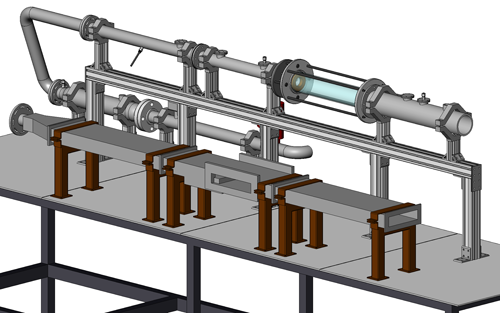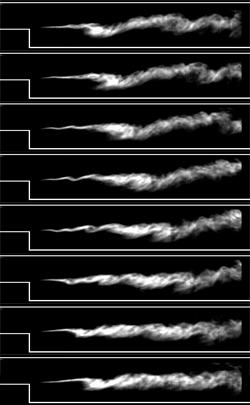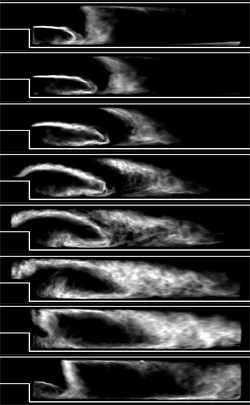Dynamics of Premixed Syngas Combustion
- Ray Speth
- Murat Altay
- Duane Hudgins
- Prof. Ahmed F. Ghoniem

Lab setup with planar and axisymmetric combustors
Background
Syngas, a mixture of hydrogen and carbon monoxide produced by burning coal in pure oxygen and steam in high pressure gasifiers, has been proposed as the fuel of choice for modern high efficiency low emission combined cycles power plant, in which gas turbine engines are used as topping cycles that take advantage of high temperature combustion products to improve the overall efficiency of the power plant. Incorporating technologies to filter out turbine-corroding gases from the gasifier products and delivering clean syngas to the gas turbine combustor enables the use of syngas in gas turbines. Furthermore, efficient separation technologies can be used to produce hydrogen from the syngas, which can then be fed into fuel cells to further improve the energy conversion efficiency of the plant. The sequestration of carbon dioxide, following the production of steam for the bottoming cycle, makes this plant environmentally ideal.
Experimental Work
The objectives of this project are to develop a fundamental understanding of syngas combustion dynamics in cases when flames are stabilized by recirculating flows formed in the wake behind sudden expansions or in swirl stabilized flows. We are currently working with syngas at varying hydrogen–carbon monoxide ratios, premixed with air over a range of equivalence ratios, inlet temperatures and Reynolds numbers. We are conducting experiments in both a planar combustor and a newly designed axisymmetric combustor. The insight gained from these experiments will be used to suggest different variations on the flame stabilizations environments aimed at passively stabilizing the flames.


Stable (left) and unstable (right) flames in the backward-facing step combustor